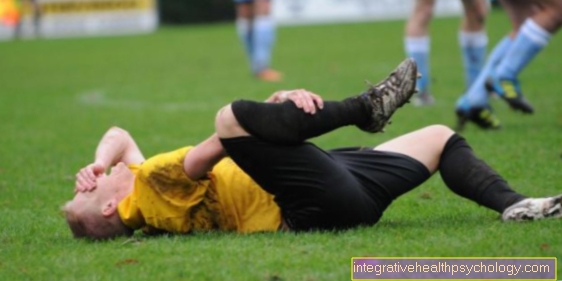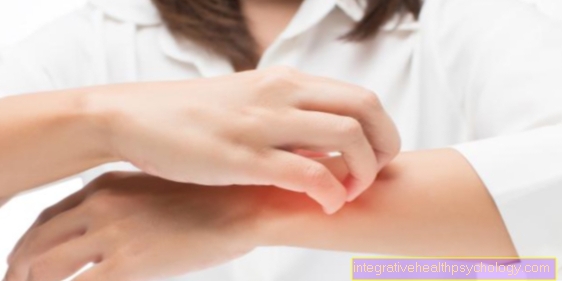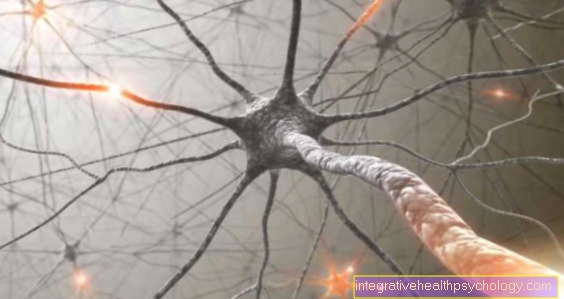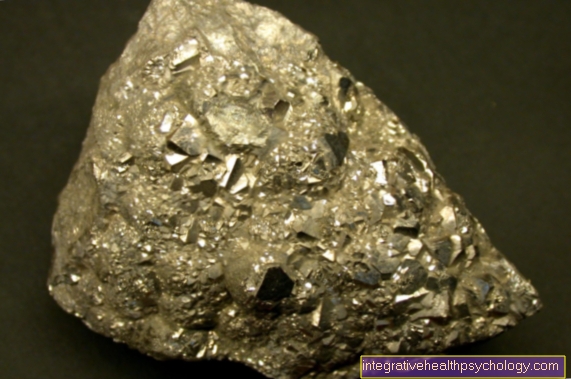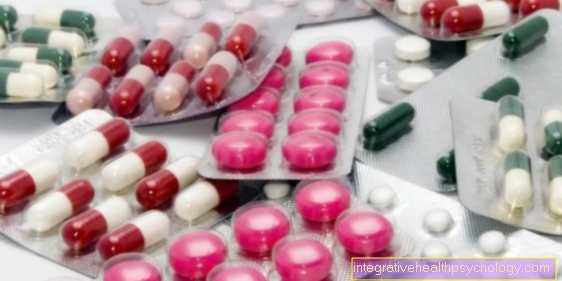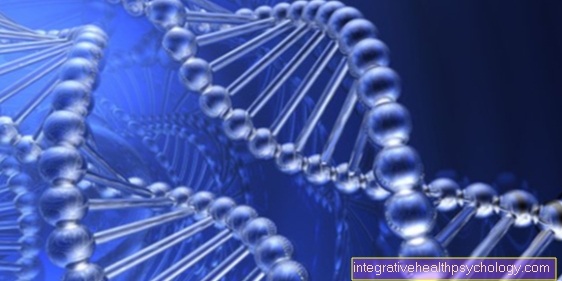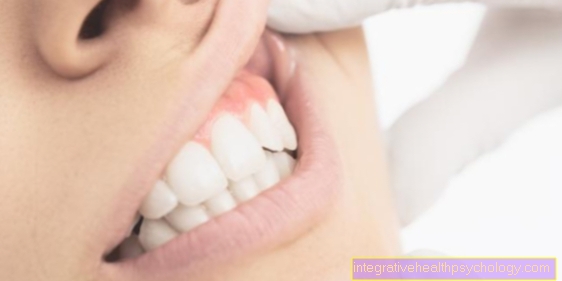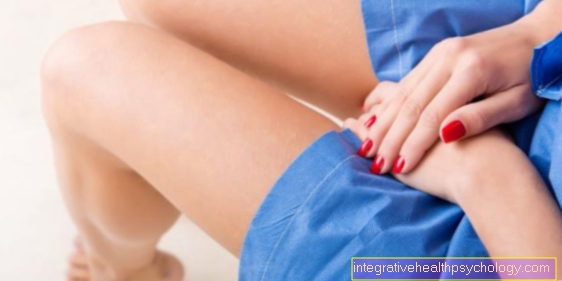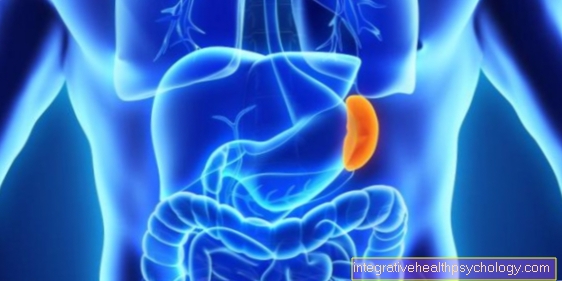Puberty gynecomastia
definition
Puberty gynecomastia is the excessive breast growth in young men during puberty. This is caused by an increase in the mammary gland tissue.
On the other hand, there is pseudogynecomastia in which breast growth occurs due to increased fat growth.

In puberty gynecomastia, the breasts can only swell slightly, but the breasts can also be more pronounced so that the breasts are similar in size to those of a girl. Breast growth can occur on one or both sides. Overweight boys are more likely to be affected than those of normal weight. In addition to the aesthetic aspect, psychological stress is particularly important.
causes
Gynecomastia can occur at any age and have various causes. In addition to genetic factors, hormonal imbalances and drug side effects play a major causal role.
In puberty gynecomastia, the hormonal changes that occur during this phase are the cause of the excessive breast growth. There is an imbalance between the male sex hormone testosterone and the female sex hormone estrogen.
An excess of estrogen leads to increased mammary gland growth. Since an increased conversion of testosterone into estrogen takes place in adipose tissue, overweight boys are more often affected by puberty gynecomastia. Puberty gynecomastia occurs in about 60% of pubescent adolescents. The peak of the disease is in the 14th year of life.
also read: What happens in puberty?
diagnosis
The diagnosis is a visual diagnosis. Puberty gynecomastia is when a boy has excessive breast tissue.
Although the diagnosis can usually be seen at first glance, a thorough medical history and physical examination should be performed. It is also important to distinguish whether the breast is simply excessive fatty tissue or actually breast tissue.
If the affected boy presents to the doctor, he or his parents will be asked, among other things, about the previous development of the child, previous illnesses, illnesses of the siblings or the parents. It is also important since when the breasts have enlarged. This is followed by a physical examination, and a blood sample may also be taken. Since puberty gynecomastia occurs relatively often, i.e. it is quite typical for this age, extensive further tests do not usually have to be carried out, but rather a wait-and-see behavior is sufficient.
Concomitant symptoms
The increased breast development can occur on one or both sides and can be differently pronounced.
The accompanying symptoms of breast swelling in adolescence can include a feeling of tension in the breasts, chest pain and, in some cases, discharge from the mammary glands.
In puberty gynecomastia, however, in addition to the physical symptoms, the psychological consequences play an important role. For both boys and girls, puberty is a very important phase in the development of their own adult identity, in which self-confidence also plays a decisive role. Enlargement of the boy's breasts is something that those affected find very embarrassing, especially at this stage.
Especially at this age, it can also be something to which the peers react negatively. There is a risk of social withdrawal.
Pain
At the beginning, breast growth in both girls and boys can be accompanied by an uncomfortable feeling of tension or even pain in the breast area.
Treatment options
In most cases, puberty gynecomastia does not require treatment. In a majority of cases, the increased mammary gland tissue recedes completely. Nevertheless, it takes a while and the phase until the breasts have regressed can be very stressful for the adolescents.
In this respect, it must be considered whether it is helpful to call in a psychologist who tries to take some of the shame and fear away in discussions with the young person and thus prevent social withdrawal and avoidance strategies as much as possible.
In some cases, the excess breast tissue does not completely resolve. Then - together with the young person - it must be considered how disruptive the finding is and whether surgical removal is an option. The procedure is performed under general anesthesia. The aim is to restore a normal male breast contour without large annoying scars. Even in boys whose puberty gynecomastia is very painful, an operation can be considered at an early stage.
In most boys, the mammary gland tissue has usually regressed completely by the age of 20.
Drug treatment for puberty gynecomastia has not yet been firmly established. There are indications that the active ingredient tamoxifen is supposed to suppress the growth of the mammary glands. However, it has mainly been tested in gynecomastia independent of puberty and only in a few patients.
The attending physician should decide on a case-by-case basis whether a therapy attempt with tamoxifen makes sense.
Tamoxifen
Tamoxifen is a drug that plays an important role in the treatment of breast cancer (breast cancer) in women. Tamoxifen inhibits the effects of estrogen in breast tissue.
Several small studies tested the effectiveness of tamoxifen in treating gynecomastia. This showed that in many cases a reduction in the size of the mammary gland tissue could be achieved with a decrease in pain. However, since the studies only had a very small number of cases, there is no current recommendation for the use of tamoxifen in puberty gynecomastia.
Since the mammary gland tissue regresses spontaneously (without treatment) in most cases, drug therapy with tamoxifen should only be offered to patients who have not experienced such a spontaneous regression. Tamoxifen could be used as an alternative to surgical removal of the excess tissue. However, the individual case should be discussed with the treating pediatrician.
Operational measures?
Surgery should be considered for puberty gynecomastia, especially if the mammary gland tissue does not regress spontaneously.
The process of waiting can be tedious here, however, as the regression can take years. If the psychological stress is too great, surgical removal of the excess tissue can be considered earlier.
The operation is not a serious procedure. Nevertheless, every operation should be carefully considered, as it always involves risks. A therapy attempt with the active ingredient tamoxifen can possibly be made before the decision to operate. This should be decided by the attending physician.
Is it possible to "train away" puberty gynecomastia?
No. In true puberty gynecomastia, breast growth is caused by an increase in mammary gland tissue due to the influence of hormones. Compared to fat, this tissue cannot be trained away. At most, regular strength training will make the contours tighter and therefore a little less noticeable.
Pseudogynecomastia, on the other hand, is an enlargement of the male breast due to an increase in adipose tissue, as occurs above all in overweight people. This type of gynecomastia can be reduced through strength training. Since many adolescents who suffer from puberty gynecomastia are overweight, light physical training should generally be observed.
Duration of regression
Puberty gynecomastia has its frequency peak around the age of 14. As a rule, the excess mammary gland tissue recedes. How long it takes for complete regression to occur can vary widely. However, the process often lasts for several years.








